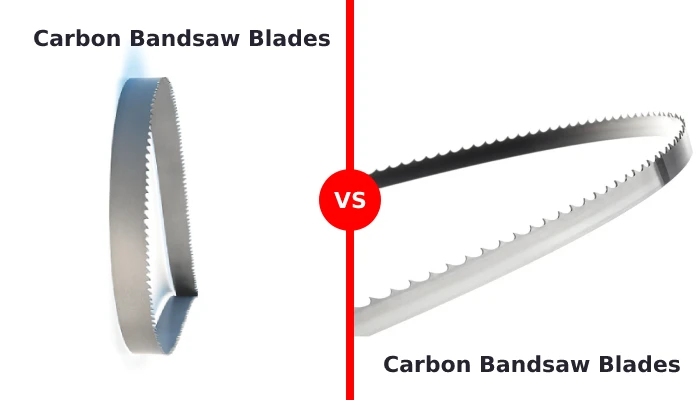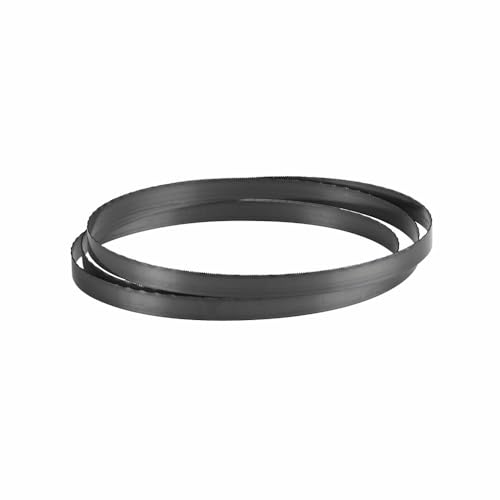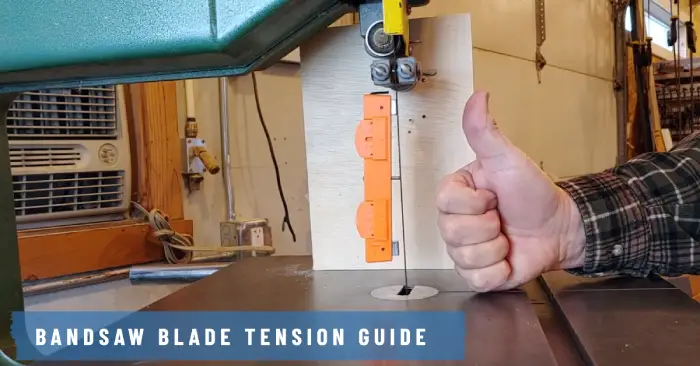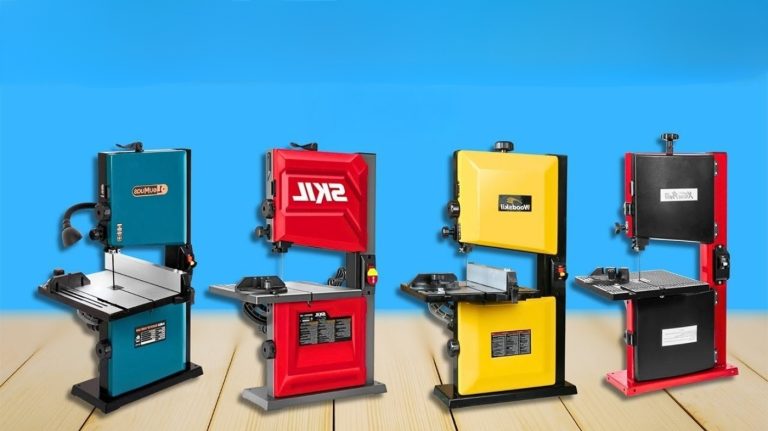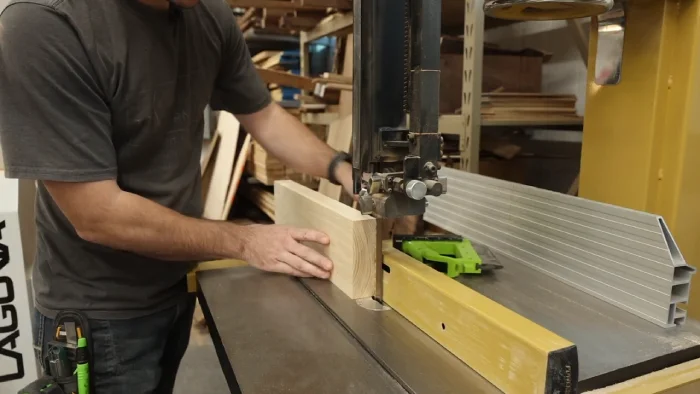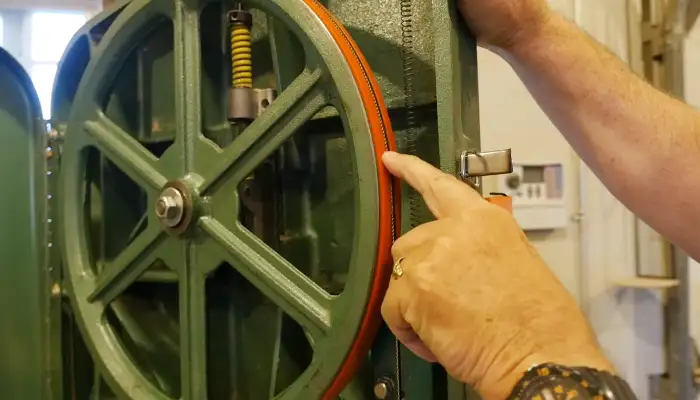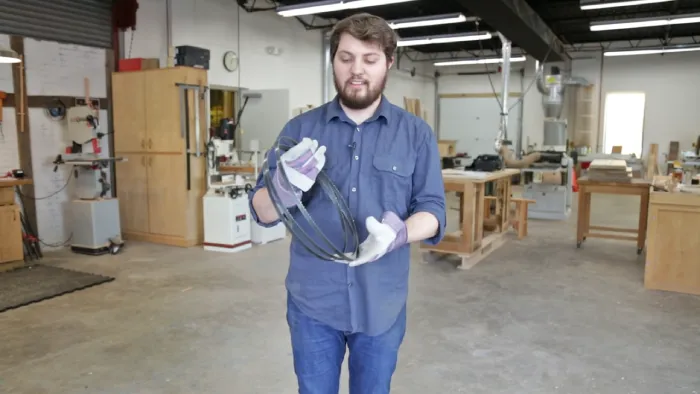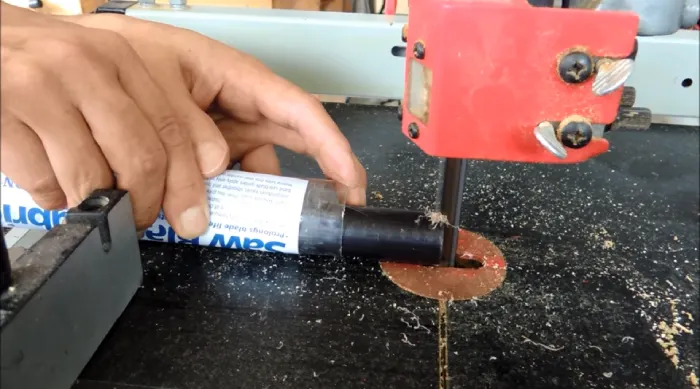Bi Metal vs Carbon Bandsaw Blades: 10 Significant Differences
Bandsaw blades are crucial in achieving precise cuts, so knowing the difference between blade types, such as carbon and bi-metal blades, is important. These blades are built to withstand heavy-duty cutting tasks and provide superior durability. Still, there are some major differences between them.
According to my research, I observe that bi-metal blades have a superior tooth design and structure. These saw blades offer exceptional cutting performance and resistance to wear. In addition, I find carbon blades to be effective in softer materials due to their affordability and effectiveness.
In this discussion, I will discuss the key differences between bi-metal and carbon bandsaw blades, their advantages, and help you make an informed decision. So, whether you’re a professional woodworker or a DIY enthusiast, keep reading to discover the best choice for your bandsaw.
- High-speed steel edge resists heat
- Contains 8% cobalt for durability
- Rc 65-67 tooth hardness
- Alloy steel backer reduces fatigue
- Designed for various metal cutting
- High-grade carbon steel construction
- Optimal geometric tooth design
- Versatile wood and plastic cutting
- Heat resistant and durable weld
- Precision cutting at high speeds
Ten Significant Differences Between Bi-Metal and Carbon Bandsaw Blades
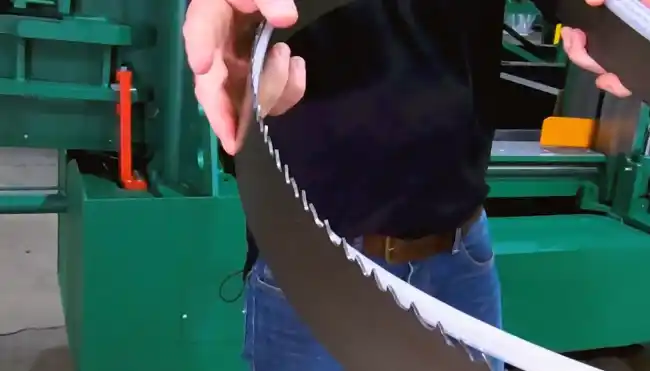
Let’s examine the ten significant differences that I observed between bi-metal and carbon bandsaw blades.
- Blade material composition
- Blade Hardness and Durability
- Tooth design and structure
- Heat resistance
- Cutting capacity
- Specialized variants
- Suitable applications
- Cost considerations
Blade Material Composition
When comparing bi-metal and carbon bandsaw blades, a significant difference in their material composition should be examined in detail.
Bi-metal blades consist of high-speed steel teeth welded onto a flexible and durable alloy steel backing material. This combination provides the blade with exceptional cutting power and resistance to wear.
On the other hand, carbon blades are made entirely of a high-carbon steel alloy that’s hardened and tempered to increase its strength and durability. While they may not offer the same level of cutting performance as bi-metal blades, carbon blades, like wooden doors, can handle softer materials well.
Blade Hardness and Durability
The hardness of a bandsaw blade plays a crucial role in distinguishing between bi-metal and carbon blades.
Bi-metal blades, featuring high-speed steel teeth, exhibit a superior, cutting-edge hardness compared to carbon blades. This difference significantly influences cutting performance, allowing bi-metal blades to excel in prolonged cutting applications.
Moreover, the lifespan and durability of these blades differ substantially. Bi-metal blades, which combine a high-speed steel tooth edge with a flexible alloy steel back, are known for longevity. This construction enhances resistance to wear and breakage, making bi-metal blades ideal for demanding cutting tasks.
Regarding wear resistance, bi-metal bandsaw blades outperform carbon blades, making them more suitable for prolonged and challenging cutting jobs. The key contributing factor to this superiority lies in the hardness of the cutting edges.
With a high-speed steel edge welded to a flexible alloy steel back, bi-metal blades have exceptional strength and durability, allowing them to handle various materials.
Conversely, though more economical, carbon bandsaw blades are prone to quicker dulling. This makes them less suitable for heavy-duty cutting, especially with abrasive materials. Because the softer carbon steel composition makes them more susceptible to wear and tear, resulting in a shorter lifespan than bi-metal blades.
Tooth Design and Structure
Bi-metal bandsaw blades have teeth made of high-speed steel, allowing them to cut wood, metal, and plastic easily. The high-speed steel teeth are engineered to provide excellent heat resistance, allowing for prolonged cutting without compromising the blade’s integrity.
These blades typically feature a variable tooth pitch, where the size and spacing of the teeth vary along the blade’s length. This design ensures efficient chip removal and reduces the risk of clogging, resulting in smoother cuts and increased productivity.
In contrast, carbon blades have a tooth structure composed of a high-carbon steel alloy. While this design enables quick and precise cuts, it makes the blade more susceptible to dulling, especially when cutting harder materials.
Heat Resistance
Bi-metal bandsaw blades exhibit superior heat resistance compared to carbon blades, which makes them a good choice for cutting metal and other hot materials.
The bi-metal construction consists of a high-speed steel tooth edge attached to a flexible alloy steel back, allowing efficient heat dissipation during cutting. This unique design prevents the blade from overheating and maintains its cutting performance even in high-heat applications.
Carbon blades, on the other hand, maybe more susceptible to overheating and blade damage due to their composition. The lack of a heat-resistant alloy in carbon blades reduces their ability to dissipate heat effectively, leading to a shorter lifespan and decreased cutting efficiency.
Cutting Capacity
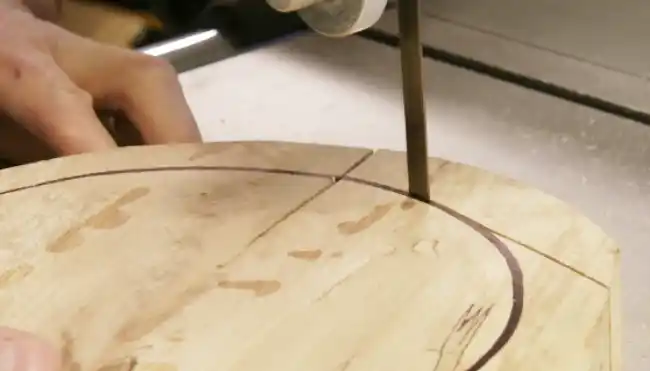
To compare the cutting capacity of bi-metal and carbon bandsaw blades, I suggest considering their suitability for heavy-duty applications and their ability to cut through thicker materials.
Bi-metal blades are designed for heavy-duty cutting tasks and can handle thicker materials. These high-performance blades have a cutting capacity up to 50% greater than carbon blades. This makes them ideal for cutting thick-walled pipe, tubing, and heavy structural steel sections.
On the other hand, carbon bandsaw blades may have limitations in their cutting capacity. They may not be able to handle thicker materials, which makes them more appropriate for lighter-duty applications.
Specialized Variants
Bi-metal blades offer a range of types designed for specific applications. These include blades for general-purpose cutting, cutting bundles and structural shapes, cutting exotics and high-hardness steels, and even specialized blades for pallet dismantling.
On the other hand, carbon blades are available in series such as the 101 Series (flex-back), which is ideal for plastics and softwoods. The 201 Series (hard-back) offers greater rigidity, making it suitable for hardwoods and mild steels. These different series allow users to choose the blade for their cutting needs.
Suitable Applications
Bi-metal blades can cut various materials, including metal, wood, and plastics. These blades are particularly suitable for heavy-duty cutting tasks due to their higher durability. They come in specialized variants, such as the 901 Series, designed for cutting wood pallets and cater to specific cutting challenges.
Meanwhile, carbon blades have some limitations regarding the materials they can effectively cut. They’re best suited for delicate materials like wooden materials and plastics, making them an economical choice for quick and precise cuts.
Carbon blades are often categorized into series like the 101 Series for plastics and softwoods or the 201 Series for hardwoods and mild steels, providing versatility within their specific applications.
Cost Considerations
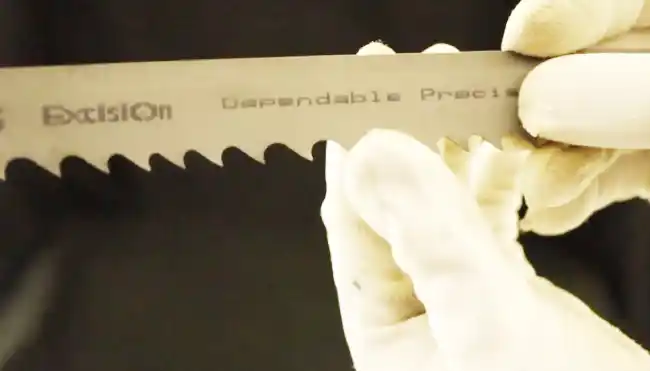
When considering the cost considerations between bi-metal and carbon bandsaw blades, I advise evaluating each option’s initial investment and long-term expenses.
Bi-metal blades may require a higher initial investment compared to carbon blades. However, they offer an extended lifespan, which can justify the extra cost in the long run.
Alternatively, carbon blades are more budget-friendly initially, but they must be replaced constantly over time. It’s crucial to consider the frequency of blade replacements and the cost of each replacement when assessing the overall expenses.
Comparison Table Between Bi-Metal & Carbon Bandsaw Blades
| Feature | Bi-Metal Blades | Carbon Blades |
| Blade Material Composition | High-speed steel teeth welded onto a flexible alloy steel backing material. | Entirely made of a hardened and tempered high-carbon steel alloy. |
| Blade Hardness and Durability | Possesses a harder cutting edge due to high-speed steel teeth. | Lower hardness, suitable for less demanding cutting tasks. |
| Tooth Design and Structure | Variable tooth pitch for efficient chip removal and smoother cuts. | Tooth structure is composed of high-carbon steel alloy, susceptible to dulling. |
| Heat Resistance | Exhibits superior heat resistance, ideal for cutting metal and hot materials. | More susceptible to overheating, reduced ability to dissipate heat effectively. |
| Cutting Capacity | Designed for heavy-duty cutting with a cutting capacity up to 50% greater. | May have limitations in cutting capacity, more suitable for lighter-duty applications. |
| Specialized Variants | Offers a range of types for specific applications, including pallet dismantling. | Available in series like 101 Series (flex-back) and 201 Series (hard-back) for specific materials. |
| Suitable Applications | Highly versatile for cutting various materials, including metal, wood, and plastics. | Best suited for softer materials like wood and plastics, suitable for quick and precise cuts. |
| Cost Considerations | Higher initial investment but extended lifespan justifies the extra cost. | More budget-friendly initially, but continuous replacement may outweigh the lower upfront cost. |
Which is better, carbon or bimetal bandsaw blade?
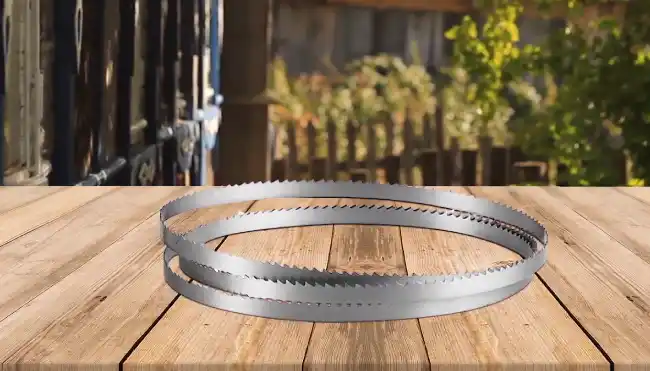
I suggest carefully considering whether a carbon steel or bi-metal bandsaw blade would be the better choice for optimal performance in sawing various materials.
My evaluation shows carbon steel blades are highly recommended for cutting wood, plastic, aluminum, and other easy-to-cut materials. They offer excellent cutting performance and are cost-effective.
However, I believe bi-metal blades are the superior choice for sawing most steels and other metals. Bi-metal blades are designed to strike the perfect balance between heat, wear, and chip resistance.
They consist of two types of steel welded together: a high-speed steel tooth edge and a flexible alloy steel back. This combination allows the blade to withstand high temperatures and maintain its cutting effectiveness for longer.
Should I use bi-metal or carbon steel bandsaw blades?
To determine the most suitable bandsaw blade for your needs, consider whether a carbon steel or bi-metal blade would be the better choice.
A carbon steel blade will suffice if you only plan to use your machine occasionally or have a few pieces to cut. Carbon steel blades are cost-effective and offer good performance for lighter applications.
However, if you use your bandsaw frequently and plan to cut a substantial amount of material, I recommend using a bi-metal blade. Bi-metal blades are constructed from two different types of steel, with a high-speed steel tooth edge welded to a flexible alloy steel back.
What are the advantages of bimetals?
One of the main advantages of bimetals is their ability to acquire different physical and mechanical specifications of both materials simultaneously. This includes enhanced mechanical and corrosion resistance, improved electromagnetic conductivity, and thermal expansion.
Combining two materials in bimetal blades allows for a synergistic effect, resulting in superior performance and durability.
Another advantage of bimetal blades is their versatility. With their unique composition, bimetal blades can cut various materials, including ferrous and non-ferrous metals, wood, plastics, and even some abrasive materials.
Consider the Benefits of Bi-Metal and Carbon Bandsaw Blades
When reviewing bi-metal and carbon bandsaw blades, it’s clear that they offer superior performance and durability. One interesting statistic I’ve found is that bi-metal blades have been found to last up to 10 times longer than carbon blades, resulting in significant cost savings over time.
Examining these nuanced differences, you can better understand their strengths and limitations. Whether navigating the challenges of a production shop or seeking reliability in a home workshop, bi-metal bandsaw blades are the preferred choice of professionals and DIYers.
- Premium-grade steel for heat resistance.
- Optimized tooth geometry enhances cutting.
- Long blade life in metal applications.
- Precision-sharpened teeth for intricate cuts.
- Versatile sizes fit common band saws.
- Triple tempered M-42 cobalt HSS teeth
- Alloy steel backing strip for heat resistance
- Raker set for increased chip evacuation
- Flexible back for curved cuts
- Ideal for tool, die, and mold steels
Last update on 2026-01-19 / Affiliate links / Images from Amazon Product Advertising API

